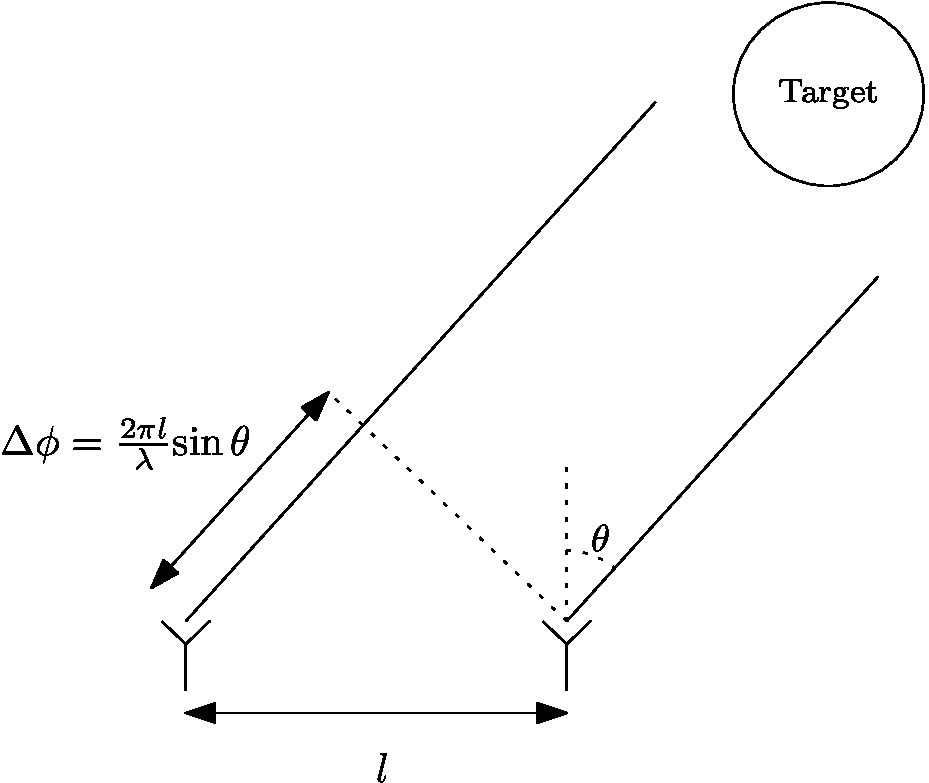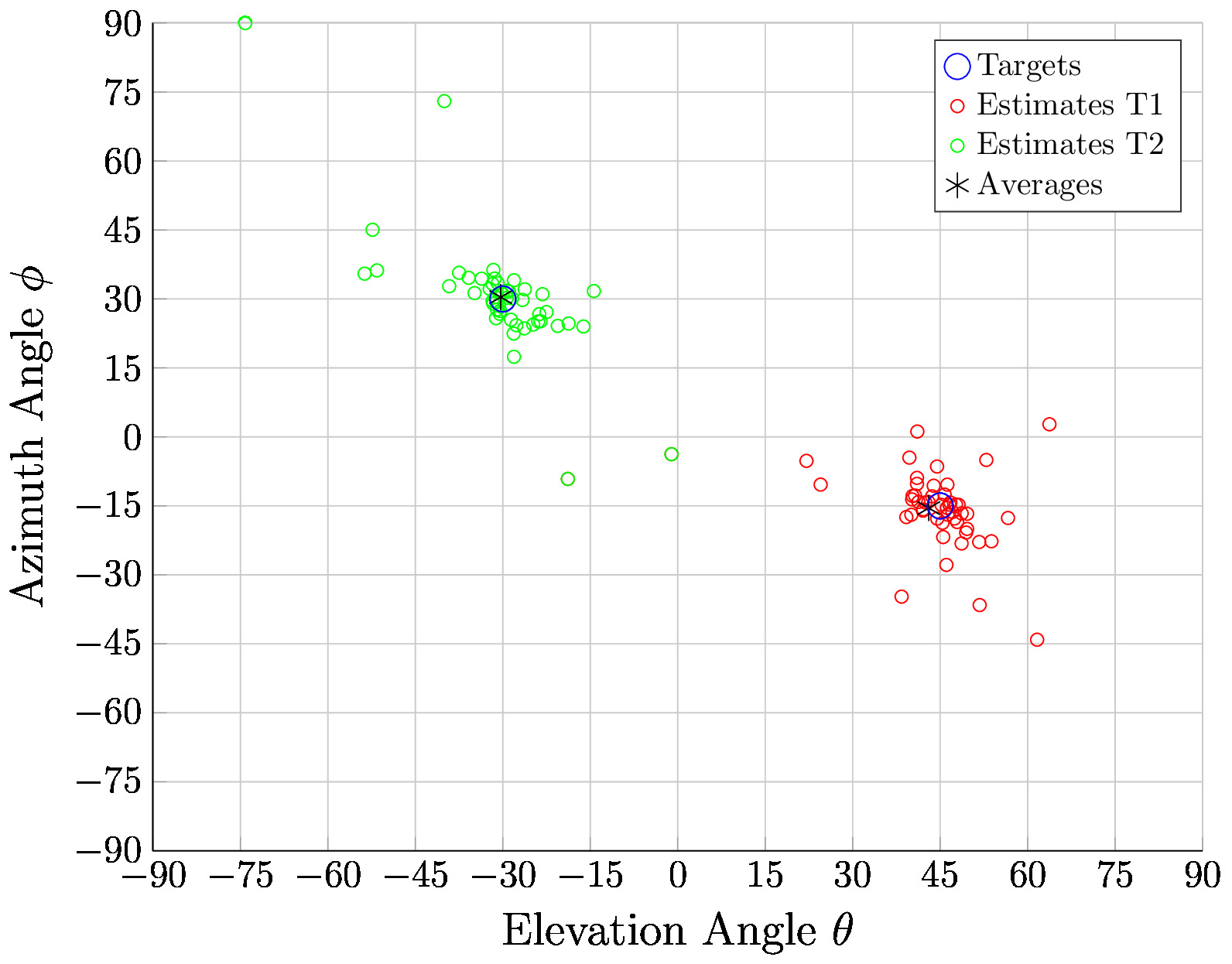Monopulse for Target Localization
Contrarily to sequentially lobing technique, the monopulse technique can determine the target’s angle of arrival from a single radar return using an antenna array. Also known as simultaneous lobing, the method compares the reflected signal at four receivers, applies an online processing method and gives information on the target’s angular position, in both azimuth and elevation.
Example of a common monopulse technique to determine angle of arrival using phase shift between two receivers.
A commonly implemented monopulse technique compares the phase of signals received by two antennas to determine the direction to target in one coordinate plane. It relies on the assumption that the signal reflected from a far field target are virtually identical in amplitude but differ in phase.

Ordinary monopulse techniques assume there is a single target in a range-Doppler resolution cell. However, if more than one target is present in the radar resolution cell, the direction information provided by the monopulse technique will fluctuate randomly.
This work proposes a novel monopulse method to estimate the azimuth and elevation angles of two targets using a circular four-receiver antenna. The algorithm is valid when the targets share neither the same azimuth nor the same elevation angles. If it is not the case, the algorithm produces a scattered cloud of points that fail to estimate both angles. To overcome this issue, the paper suggests the use of a six-antenna receiver instead. The estimation performance of the proposed algorithm is studied for various number of receive antennas and different angular distance between the targets.

Angle information of two targets T1 = (45, −15) and T2 = (−30, 30) using a four-antenna receiver by averaging over 50 pulses at SNR=20 dB.
References
- S. Jardak, S. Ahmed and, M.-S. Alouini, ”Generalized two target localization using passive monopulse radar,” in special issue of IET Radar, Sonar & Navigation, Sept. 2016.
- S. Jardak, S. Ahmed and, M.-S. Alouini, ”Angle estimation of two targets using monopulse technique for passive radar,” in IEEE Radar Conference, Johannesburg, South Africa, Oct. 2015.
- Monopulse Gitlab repository, Accessed: Mar. 2019.